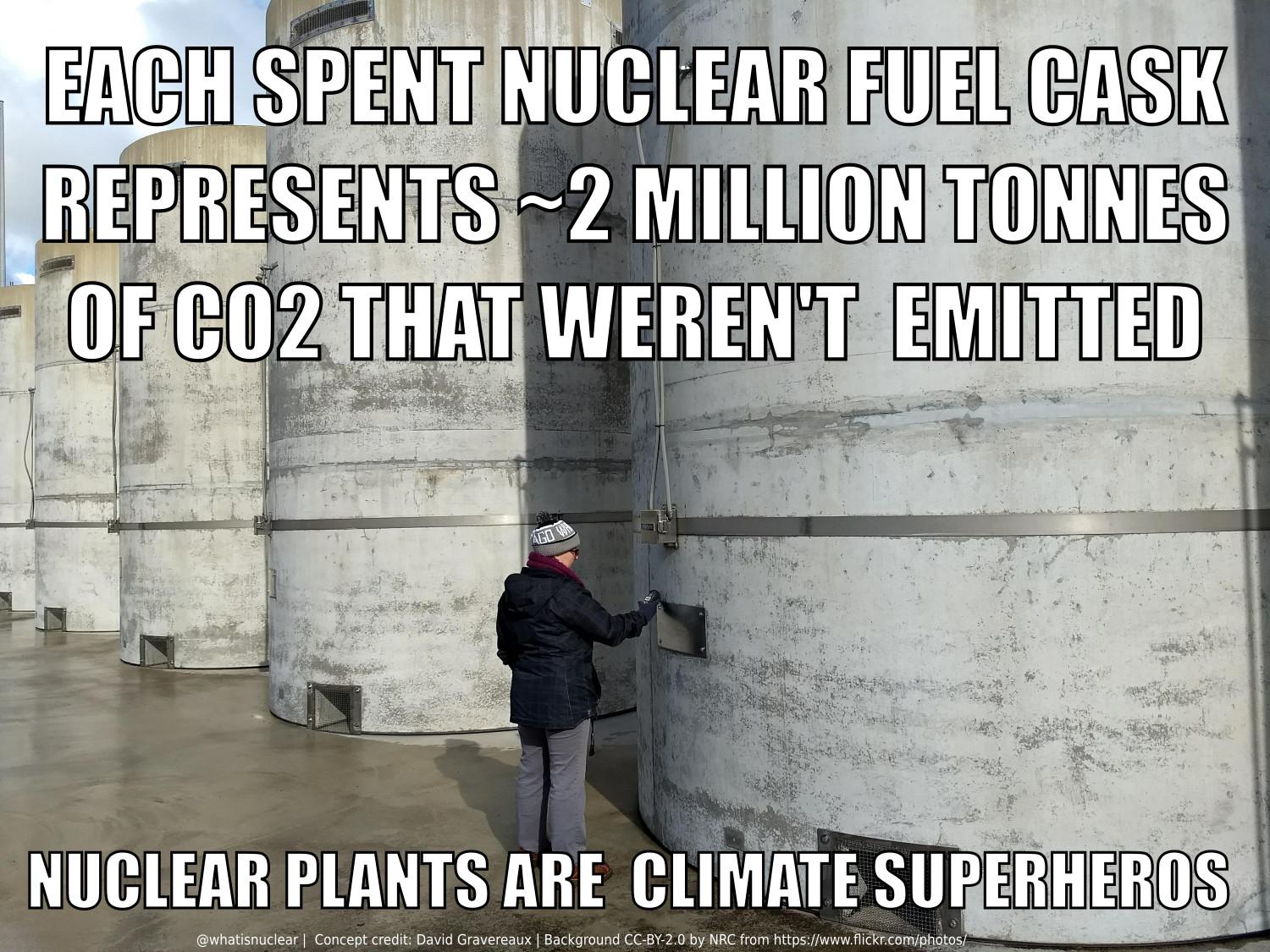How much CO₂ is avoided by each individual cask of nuclear waste?
By Nick Touran, Ph.D., P.E., 2021-12-21 , Reading time: 1 minute

Each cask is 2 million tonnes of CO₂ that were avoided.
In 2017, there were 3482 PWR assemblies discharged in the USA, initially containing 1526.5 tonnes of uranium, and that on average the assemblies were burned to 46.2 MWd/kgHM [EIA]. HM means heavy metal, and refers to the mass of initial uranium of the fresh assembly. This means that a single average 2017 PWR assembly gave out 21.5 GW-days of (thermal) energy.
units -1 "1526.5 tonnes * 46.2 MW*day/kg/3282" "GW*day"
21.488208
PWRs are about 32% thermally efficient, so those thermal GW-days are roughly equivalent to 6.9 GW-days of electricity, or 1.7e8 kWh.
units -1 "1526.5 tonnes * 46.2 MW*day/kg/3282 * 0.32" "kW*hour"
1.6502944e+08
A typical dry cask (e.g. HI-STORM 100) holds 24 discharged PWR fuel assemblies [HOLTEC]. Thus, an average dry cask full of PWR spent fuel represents about 4e9 kWh of electricity.
units -1 "1526.5 tonnes * 46.2 MW*day/kg/3282 * 0.32 * 24" "kW*hour"
3.9607066e+09
Each kWh of nuclear electricity saves (490-12) = 478 grams of CO₂ (equivalent) over gas, full lifecycle [Schlomer 2014]. Thus, a single dry cask represents a savings of 1.9 million tonnes of CO₂-eq!!
units -1 "1526.5 tonnes * 46.2 MW*day/kg/3282 * 0.32 * 24 * ((490-12) grams/(kW*hour))" "million tonnes"
1.8932177
(Older spent fuel had lower average burnup but displaced coal instead of gas, so that’s a similar result)
This page is a part of our Factlet collection.